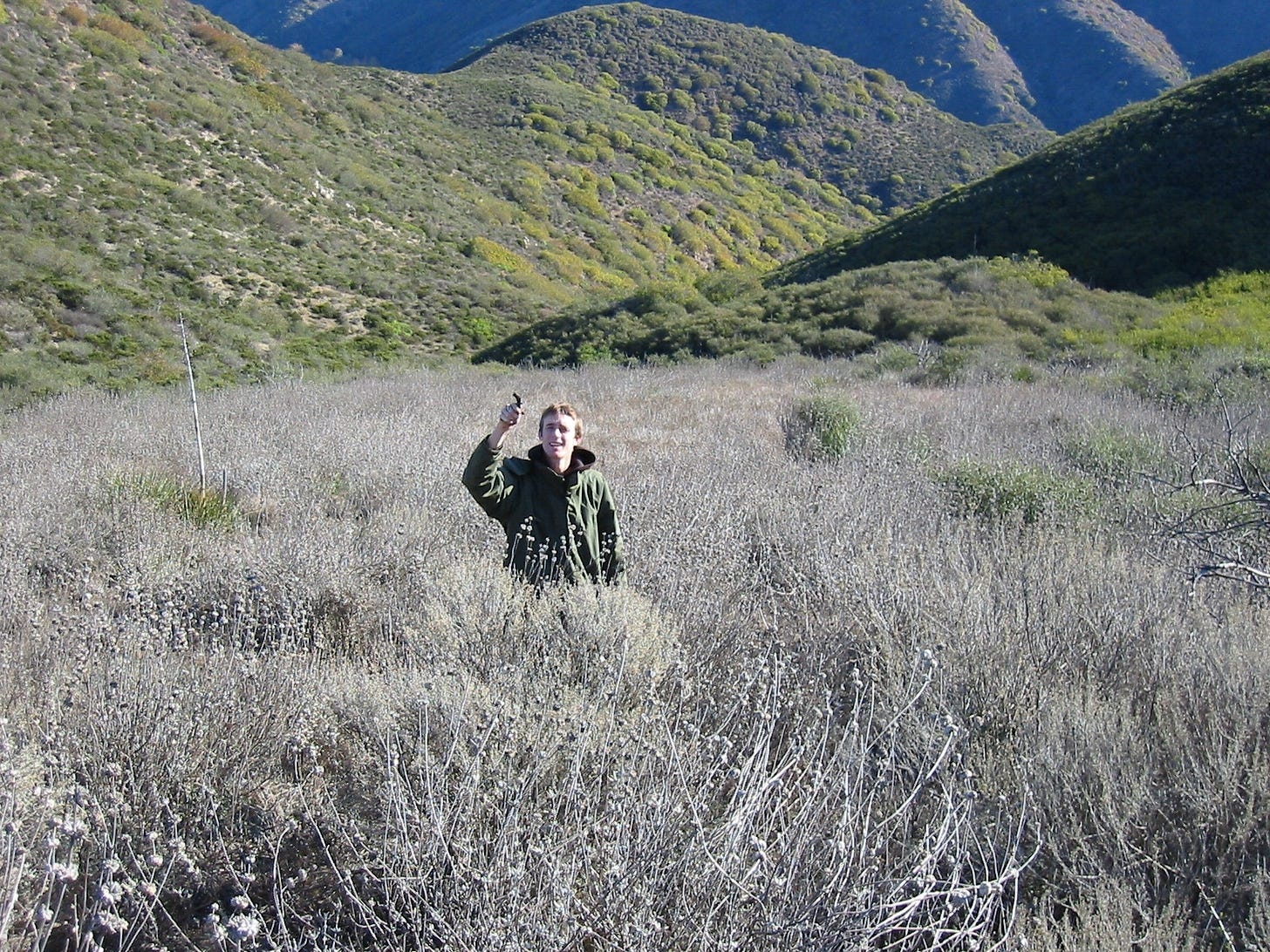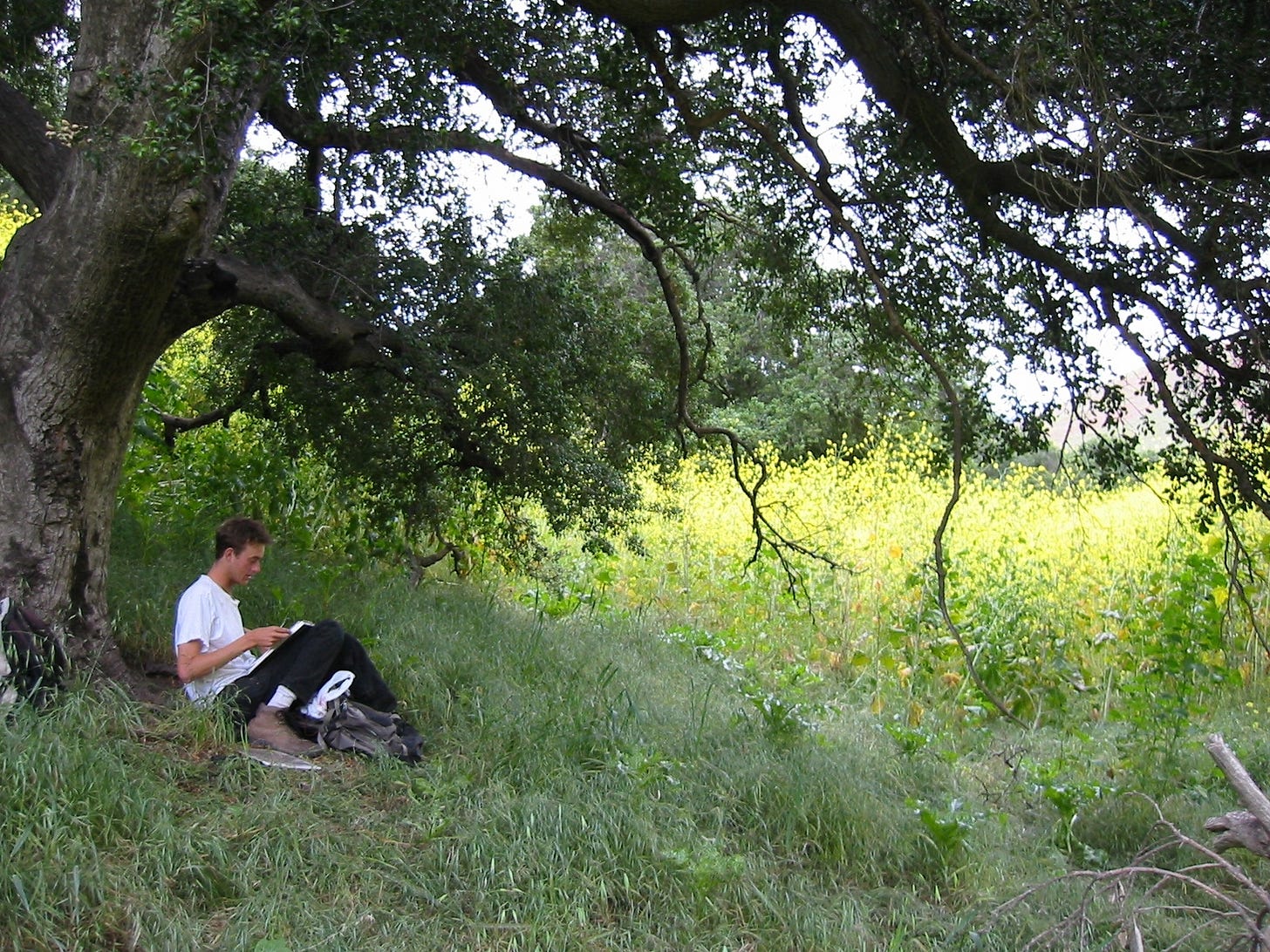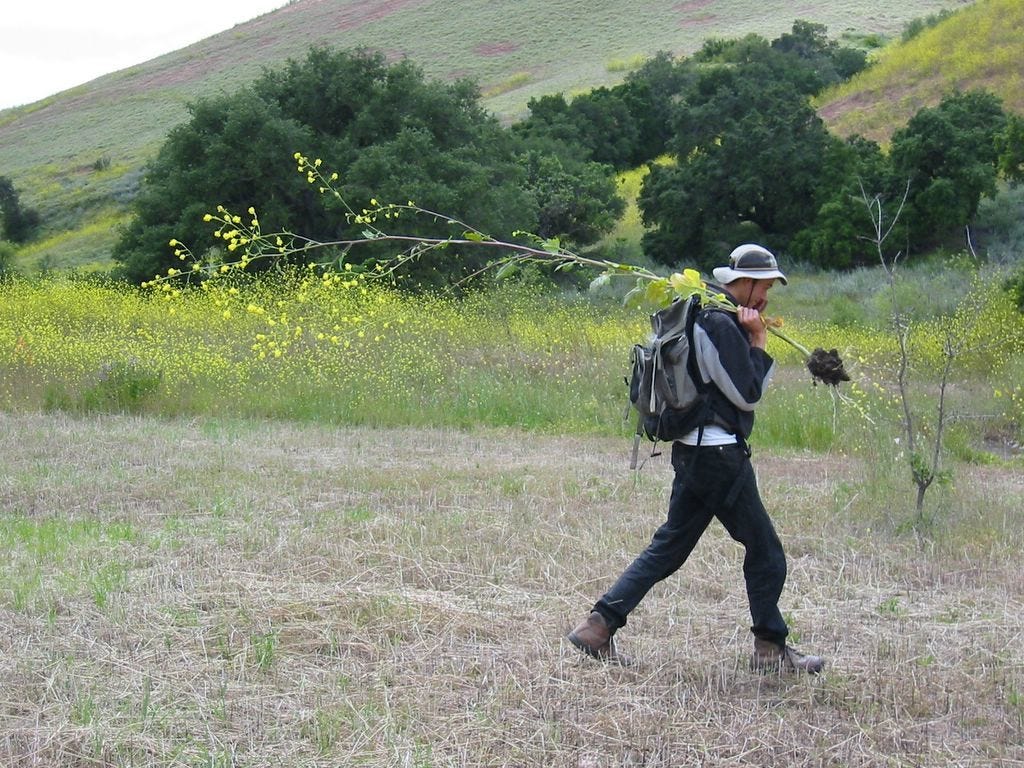The Truth about the Los Angeles Fires: Part 1 - Type Conversion
the first in a series of posts about the fire situation in California
So in a past life, before I moved to the icy Green Mountains, i lived in southern California. I worked on and off for 8 years on creating a map of the vegetation of the Santa Monica Mountains (including Pacific Palisades) which was in large part being created to model fire behavior. I also spent time in Pasadena next door to Altadena and worked as an ecologist in the San Gabriel Mountains.
The recent fires were horrible, and the threat remains for more in the near term. I keep checking the GOES imagery for smoke plumes and the weather models for signs of rain (MAYBE in a week. fingers crossed). I also keep encountering statements on social media, some in good-faith and some not, many of which are completely wrong.
The story I want to tell here is quite long, so it will be in several posts. The first one is about a factor called ‘type conversion’. But, before that i want to present a list of real and not-so-real fire factors that will be covered in this and future posts:
heres’s a list of things that did NOT cause or worsen these recent fires:
fish or water conservation to protect fish
anything to do with Northern California’s delta area whatsoever (drought made vegetation drier but last year was so wet, the reservoirs had plenty of water)
removal of dams on the Klamath river or elsewhere
forest management or lack of forest management, of any sort (the fires did not burn in forest)
fire hydrants being turned off on purpose. It’s not really possible to create a system to run thousands of them at full blast at once.
alien death rays or energy weapons or other conspiracy theories - these fires were not some freak event but something many people anticipated would happen.
Here is a list of things that did affect the fires:
unsustainable patterns of development with homes built in dangerous areas
spread of invasive species especially invasive mustard, and a form of ecological collapse called Type Conversion
similarly, planting of eucalyptus, palms, and conifers that don’t belong in the area - often right between homes.
Climate change, though it’s complicated and not as direct a link as some seem to imply.
lack of appropriate vegetation management right next to homes, but this is complicated too and not what people think either.
unsafe features in neighborhoods such as shake shingles, debris piled next to houses, wooden decks, etc
A long history of colonialism that totally upended and intentionally extinguished a management regime people had figured out before Europeans came.
Santa Ana winds, which are a pretty singular local phenomenon
“Type Conversion”, or why mustard belongs on your hot dog but not Los Angeles’ hills.
The prominent vegetation around Pacific Palisades, Altadena, and other areas of Los Angeles County’s coastal slopes is called chaparral. This is a wonderful, sweet-smelling, biodiverse ‘mini-forest’ that only occurs in a few places in the world. It is fire adapted, and its natural ecology is to burn every 30-150 years or so. Back before invasive species were introduced, the Native Americans living in this area would often intentionally burn chaparral and oak woodland during times of low fire danger. Since it would then not be able to burn again for a while, it kept them safe when the santa ana winds came. (sidenote: there must be an indigenous name for this wind event, but i do not know it). When the Spanish came, along with genocide they brought black mustard. In fact, there’s a story that Junipero Serra himself spread the seeds as he walked his bloody path.
So yeah, i am really tall. Black mustard is taller. It’s usually a biennial which means it gets this tall in two years. In the background you can see more. In the foreground you can see dead mustard covering the ground. In two years this plant grows to 10+ feet tall and then dies and dries out. Also note how little in the way of roots it has. Many chaparral plants and native oaks have roots that can stretch dozens of feet underground. Black mustard does not, so it does not hold the soil. Oh… and it loves fire. Fire spreads black mustard.
This is where the ecosystem collapse part of ecosphere collapse comes in. Black mustard will happily burn every year or two, and loves fire. Lightning is rare in coastal southern California and usually doesn’t occur with Santa Anas, but human ignitions around LA are common. The more it burns, the more the native chaparral is replaced by mustard and other similar plants, which in turn makes it burn more. This is why prescribed burns can’t fix the problem here. They would just spread mustard. I do think in the broader suite of indigenous knowledge and land management there are answers to be found, but we can’t just burn our way out of fire as long as mustard is around.
This effect is called type conversion and is a major cause of both frequent fires and increasing flooding and mudslides (remember those shallow roots). Incidentally, Jon Keeley who is one of the authors of the paper i linked is really a fire prophet and one who has often pissed off a lot of powerful people by being right all the time in ways that are inconvenient. If you’re an academic type and want to learn more i suggest looking for more of his papers. In any event, you can see examples of type conversion on Google Street View by comparing old to new images. For instance, here in the San Gabriel Mountains and here in an area of the Santa Monica Mountains with very high frequency (that probably burned this year again). Other areas, such as this area, type converted decades ago. The tall oaks and walnuts are naturally occurring species, but almost none of the vegetation on the hills is native vegetation.

The point here is not that California native vegetation isn’t ever flammable. Some of it is very flammable. You don’t want a bunch of black sage, chamise, or Coulter pine next to your home. But chamise and Coulter pine won’t burn every 2 years. And, we choose what grows between our houses, and can choose species appropriate to that (more on this soon).
(Coast Live Oak, on the other hand, is quite resistant to burning, actually blocks sparks with its dense leaves, and can resprout from low to moderate intensity fires with little impact to the tree).

Ecology is very, very complex. I’m confident the 10,000+ years of indigenous knowledge had it figured out far more than we ever will, but there are a few things i do know and can share here. Ecosystems, including chaparral natural communities, do behave a bit like organisms. There is a complex interplay of plants, animals and fungi at work. The ‘nature red in tooth and claw’ concept is flawed and colonial, but the symbiosis in nature is also not always altruistic. It’s a bit more like collusion really. Some species seem to be friends, others seem to be old enemies, but most are somewhere in between. They had their places, everything from humans to algae, and lived out their lives as part of a whole. The biosphere melded with the other ‘spheres - old-growth chaparral covered in lichen collects more fog moisture, which drips down during the otherwise dry summers. When air pollution kills the lichen or invasive species displace chaparral, this stops. The invasive plants do not ‘play nice’ with the fungi. Southern California’s climate has always been very erratic, and human-caused climate change has made this worse (and will be the subject of future posts). There was a balance, but that has changed. The fires will rage and increase in intensity as long as the mustard, bromes, and other short-lived invasive species spread. And the worst part? No one seems to know how to stop it.
This is where the link comes back to indigenous relationships to the land. I don’t know if any land management regime of any sort can fix what has been lost, or whether it will be millennia before a functioning ecosystem comes back into play. But, i do know, what we have now… whatever you want to call it… isn’t enough. I just spent an hour trying to find scientific papers to link to this post, and between paywalls and silos, i found less than I wish i had. I’ll have more science in these posts moving forward, for sure. But… that framework alone won’t fix this. Nothing within my cultural capacity can.
Next time you eat a hot dog, ask for extra mustard. Or no mustard. It doesn’t really matter, since no one is harvesting mustard in Eaton Canyon to put on hot dogs. But even here in icy Vermont, any time i taste that tangy flavor, my synesthetic brain catches a whiff of purple sage scent disappearing into time. I hope we find a way to keep the sage silvery, the streams flowing in their erratic natural patterns, and the canyon walls upright without mudslides, and keep our homes from burning down.




